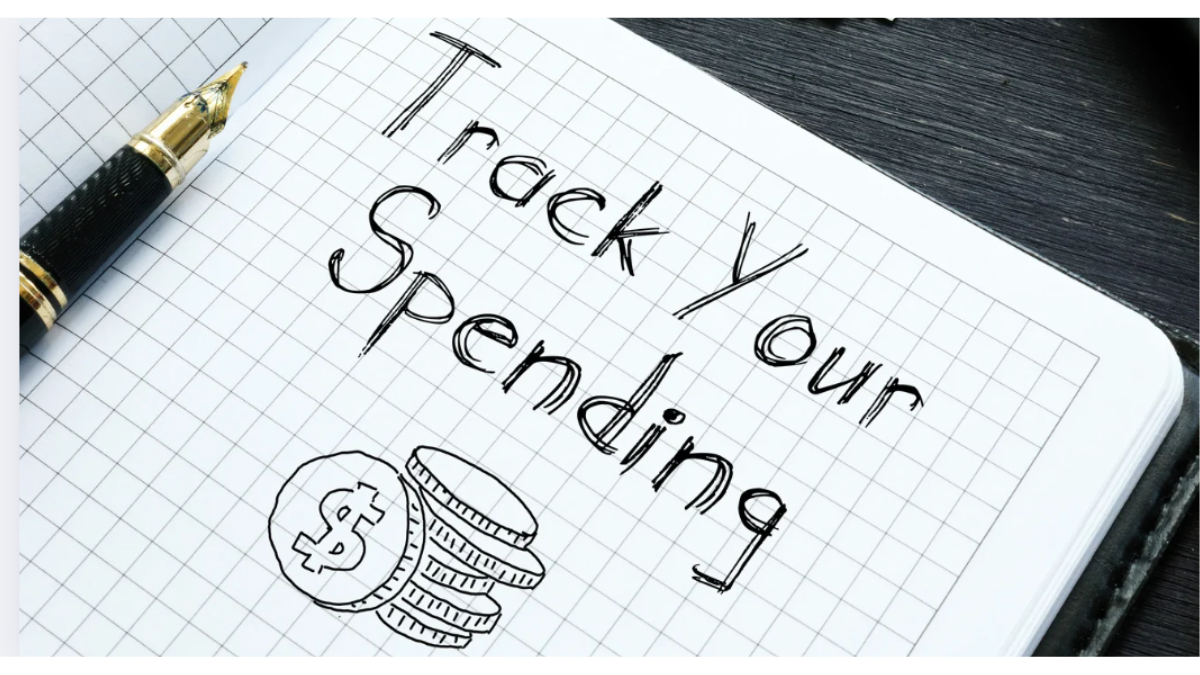The Power of Compound Growth
Compound growth is one of the most powerful forces in building wealth — and the best part is, it works even if you start with a small amount of money.
When your investments earn returns, and those returns begin earning returns, the effect snowballs. Over time, your money grows faster — not because you’re adding more, but because time is doing the heavy lifting. This concept is a core reason why many long-term investors emphasize starting as early as possible.

If you’re new to investing, understanding how compounding works can help you make smarter choices — whether you’re investing in a diversified portfolio of stocks or ETFs, or simply contributing to a retirement account.
Why Compound Growth Accelerates Over Time
In the early years, most of your growth comes from the money you’re adding. But after a decade or two, something changes — your returns start earning returns. That’s when compound growth really kicks in.
Here’s what it often looks like:
- Year 5: Growth mostly comes from your own contributions
- Year 15: It’s a mix of your contributions and the returns they’ve earned
- Year 25+: The majority of growth comes from gains on gains
Advanced Insight: Compound Annual Growth Rate (CAGR)
To track how much your money grows each year when compounding is at play, investors use CAGR, or Compound Annual Growth Rate. It’s a more accurate way to understand long-term performance than just averaging returns.
Let’s say your investment grows from $5,000 to $10,000 in five years — that doesn’t mean you earned 20% per year. In reality, your CAGR is closer to 14.87%.
Understanding this can help you set realistic expectations, compare investment options, and avoid common mistakes. If you’re curious how this works in different scenarios, we walk through real examples in our article on how investment returns are calculated.
How Time Beats Timing in Investing
Trying to “time the market” is one of the most common mistakes new investors make. They wait for the “perfect moment” to invest — but the truth is, no one can predict the market consistently.
Time in the market beats timing the market. That’s because the market’s biggest gains often happen in just a few days, and missing them can drastically lower your returns.
- Example: If you invested $10,000 in the S&P 500 in 2003 and left it untouched for 20 years, your money could grow to over $60,000.
- But if you missed just the 10 best-performing days, you’d only have around $29,000.
- Missing the 20 best days? You’d be left with under $18,000.
- Focus on consistency: Invest monthly, regardless of market ups and downs.
- Use dollar-cost averaging: Buy in smaller amounts over time to reduce risk.
- Ignore short-term noise: The market always moves — stay focused on the long term.
- Time is your advantage: You can recover from dips if you start early.

Want to understand this concept in practice? Check out Investing Habits That Build Wealth Over Time and see how Dollar-Cost Averaging Works.
For further proof, read Fidelity’s analysis of long-term investor behavior and this Forbes article on why market timing fails.
Real-Life Examples of Early Investors
Nothing drives the point home like seeing the numbers in action. When it comes to building wealth, time almost always beats timing — and often even beats larger contributions. That’s the magic of compound growth in real life.
Let’s explore some realistic, eye-opening examples.
Emily vs. Jake: A 10-Year Head Start Beats 25 Years of Saving
Emily started investing $75/month at age 22. She only did this for 10 years, then stopped contributing completely at age 32. Her money stayed invested and kept compounding.
Jake, on the other hand, didn’t begin investing until age 32. But he invested much more — $200/month — and did so consistently for 25 years until he turned 57.
Here’s how it turned out by age 57:
- Emily
- Contributed: $9,000
- Final balance: $110,000
- Jake
- Contributed: $60,000
- Final balance: $105,000
Another Case: The Power of Starting in Your 20s
Let’s say two friends, Alex and Ryan, both plan to retire at 65 and expect an average 7% return on their investments.
- Alex starts at age 25, investing $100/month until 65.
- Total contributions: $48,000
- Final balance: $264,000
- Ryan waits until age 35 to start, investing $200/month — double what Alex does — until 65.
- Total contributions: $72,000
- Final balance: $236,000
Time is more valuable than money when it comes to investing.
Habits Matter More Than Amounts
Starting early isn’t about having a lot of money — it’s about building the habit of investing. You can start with as little as $25 or $50 a month, and let automation do the rest.
Here’s why early habits win:
- You get more compounding cycles.
- Market dips don’t hurt as much — you have time to recover.
- You build confidence as an investor through experience.
Backed by Data: What Experts Show
Fidelity’s Case Study: $5,000 at 25 vs. 35
Fidelity analyzed what happens when someone invests a one-time lump sum of $5,000 at different starting ages, assuming an average annual return of 7% (a fairly conservative market estimate):
- If you invest $5,000 at age 25, by age 65 it could grow to around $74,000.
- If you wait until age 35, the same $5,000 only grows to around $38,000 by 65.
Even though the amount invested is exactly the same, the early starter ends up with almost twice as much — just from having more time for compound growth to do its job.
Fidelity’s full breakdown is designed to help younger investors understand why delayed gratification and consistency are more effective than trying to “make up for lost time” later on.
NerdWallet’s Visualization: Small Contributions, Big Future
NerdWallet takes this idea further with visual comparisons showing how even modest monthly investments add up dramatically over time.
Here’s one of their key illustrations:
- Starting at age 22, investing $150/month until age 67 could leave you with around $500,000.
- But if you delay until age 32, you’d need to invest $275/month — almost double — to reach the same amount by retirement.
- Wait until age 42, and you’ll need to invest $500/month — more than 3x the original amount — just to catch up.
Time is your greatest asset. Not income. Not stock picking. Just time.
NerdWallet’s article helps visualize this perfectly for different scenarios, and it’s a great resource for beginners: NerdWallet – Why You Should Start Investing Early
What This Means for You
These aren’t theoretical examples. They’re practical takeaways anyone can act on today:
- You don’t need a huge salary to get ahead. You just need time on your side.
- Even $25 or $50/month is enough to start building momentum.
- The earlier you start, the less pressure you’ll feel later to “save aggressively” or “play catch-up.”
Also, use the SEC Compound Interest Calculator to plug in your own numbers and see what’s possible for your timeline.
Common Excuses That Delay Action
“I’ll invest when I have more money.” “The market feels too risky right now.” “I don’t know enough about it.”
Sound familiar? These are the mental roadblocks that stop most people from ever getting started — and they can cost you tens of thousands in lost growth over time.
Let’s break down the most common excuses:
- “I don’t have enough money.” The truth is, you can start with as little as $5. Apps like Acorns or Fidelity let you invest with micro-deposits and round-ups.
- “I need to pay off debt first.” While high-interest debt should be a priority, you can still invest small amounts while paying it down. Our guide on how to balance debt and investing shows you how to do both.
- “I don’t understand investing.” You don’t need to be an expert. Start with simple options like target-date funds or index ETFs that are beginner-friendly.
- “The market is too high or too low.” Trying to time the market is nearly impossible. As explained in our guide on dollar-cost averaging, investing consistently beats trying to find the “perfect” moment.
Even NerdWallet emphasizes that waiting just five years to start can cut your long-term wealth by more than 40%. And according to FINRA, starting small and consistent is the smartest path forward.
How to Start Investing With Little Money
You don’t need a lot of money to become an investor. In fact, some of the best platforms today are built specifically for beginners with limited cash. Starting with small amounts is not only possible — it’s smart.

Here’s how to begin:
- Choose the right platform: Apps like Acorns, Fidelity, and SoFi Invest let you get started with as little as $5–$10.
- Pick a simple investment: Consider broad ETFs or index funds like VTI, which hold hundreds of companies. This spreads your risk while still giving you market exposure.
- Automate it: Set up recurring contributions. Even $10 per week adds up — and removes the emotion from investing. Our Beginner’s Guide to Automation shows how to set it up.
- Skip individual stocks at first: They’re tempting but volatile. Stick with diversified options until you have more experience.
Want more clarity? Read How to Build Wealth on a Small Income and learn about fractional shares, which let you invest in companies like Apple or Amazon with just a few dollars.
And if you’re comparing apps, the NerdWallet roundup of micro-investing platforms and Forbes’ beginner investment picks are excellent places to start.
Best Platforms to Begin With
Choosing the right platform can make or break your investing experience — especially when you’re just starting out. You want something that’s beginner-friendly, low cost, and lets you start with small amounts.
Here are some of the best options for new investors in 2025:
- Fidelity: Zero commissions, fractional shares, and no account minimums. Perfect for long-term investors and index fund strategies.
- SoFi Invest: Offers both active and automated investing with no fees and a clean, user-friendly app.
- M1 Finance: Automates your investments into customizable “pies” — great for dollar-cost averaging.
- Acorns: Rounds up your purchases and invests the spare change. Best for true beginners and set-it-and-forget-it investors.
Staying Consistent With Your Investments
Consistency is what separates successful investors from everyone else. It’s not about making one big move — it’s about making small moves regularly, even when the market looks shaky.
Here’s how to build consistency into your investing routine:
- Automate your contributions: Set up recurring transfers so you invest on autopilot. Tools like Fidelity’s Auto-Invest or M1 Finance’s pies make this easy.
- Stick to your plan — not emotions: Markets will drop. Don’t panic-sell. Stay invested and focus on the long term. Read our guide on how to stay invested during volatility.
- Track your progress monthly: Log your contributions and growth to stay motivated. Use a free app like Personal Capital or a simple spreadsheet.
- Celebrate small milestones: Every $100 or $1,000 invested is a win.
Early Investor Mistakes to Avoid
Starting early is powerful — but it won’t help if you fall into common traps that sabotage your long-term gains. Here’s what to watch out for as a beginner:
- Trying to time the market: Waiting for the “perfect moment” often leads to inaction. Use dollar-cost averaging instead to invest consistently, regardless of market highs or lows.
- Investing everything in one stock:It might feel exciting to go all-in on your favorite company, but it’s risky. Start with diversified ETFs or index funds to spread risk.
- Stopping contributions during downturns: The market will dip — don’t panic. In fact, dips are often the best time to buy more. Our investing habits guide explains why staying consistent is key.
- Not setting clear goals:Are you investing for retirement? A house? Freedom? Defining your goals helps shape your strategy. Use our SMART goal-setting method to stay focused.

Risk tolerance—the amount of investment risk you’re willing and able to accept—which is impacted by a variety of factors and is unique to you.
Learn More
Micro-investing app that invests your spare change automatically into diversified portfolios.
Learn More
Official tool to visualize how your money grows with compound interest.
Learn More




